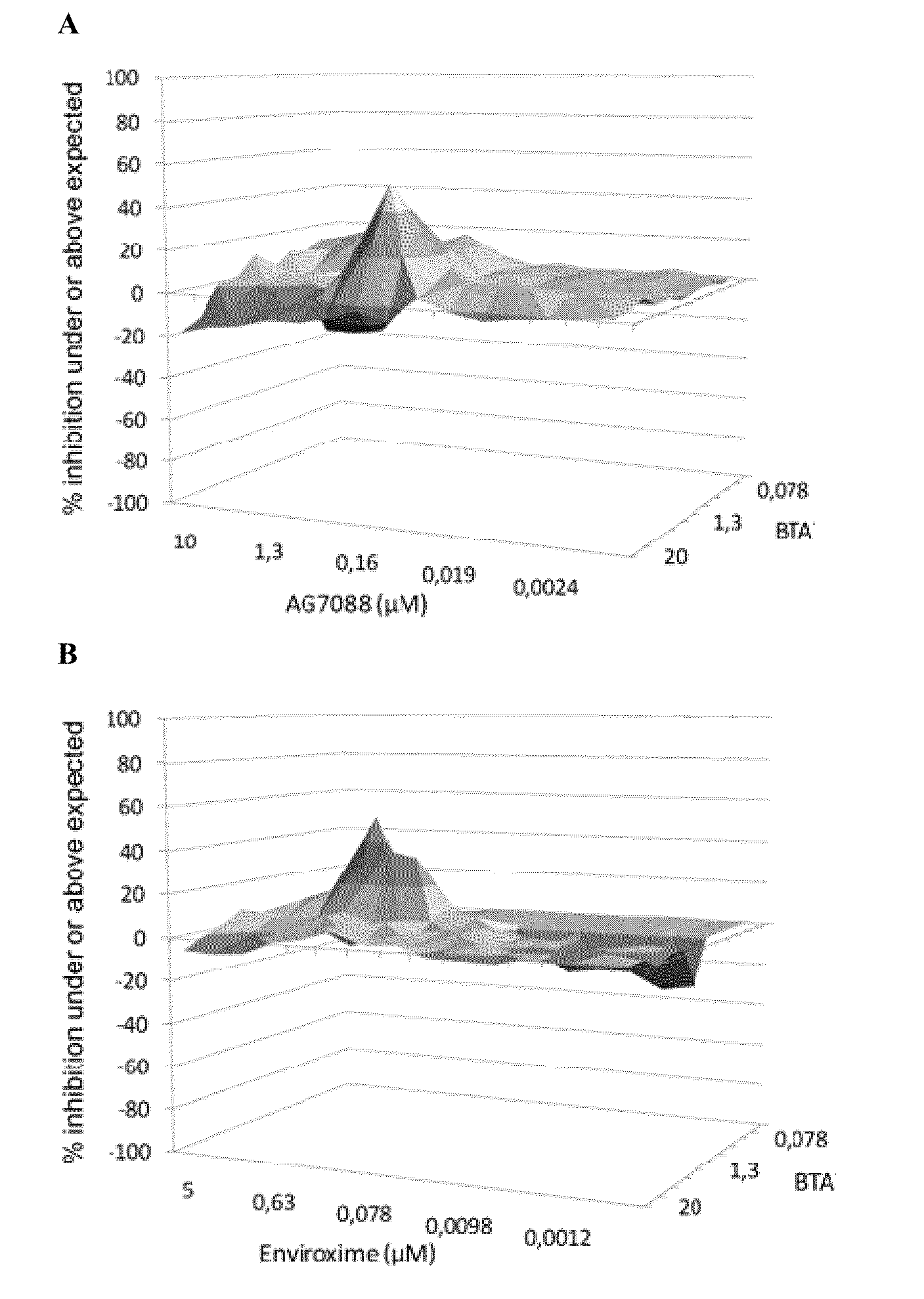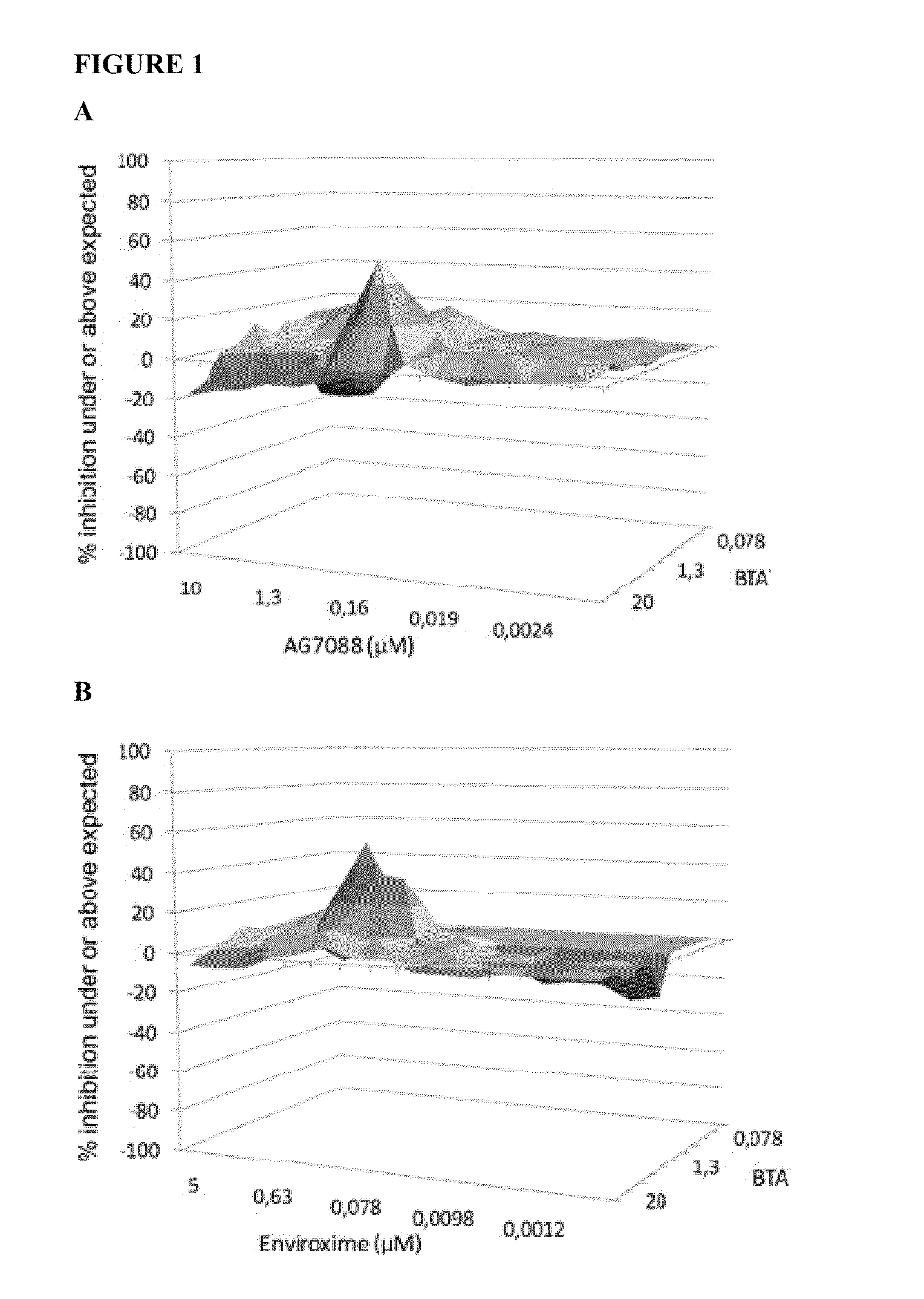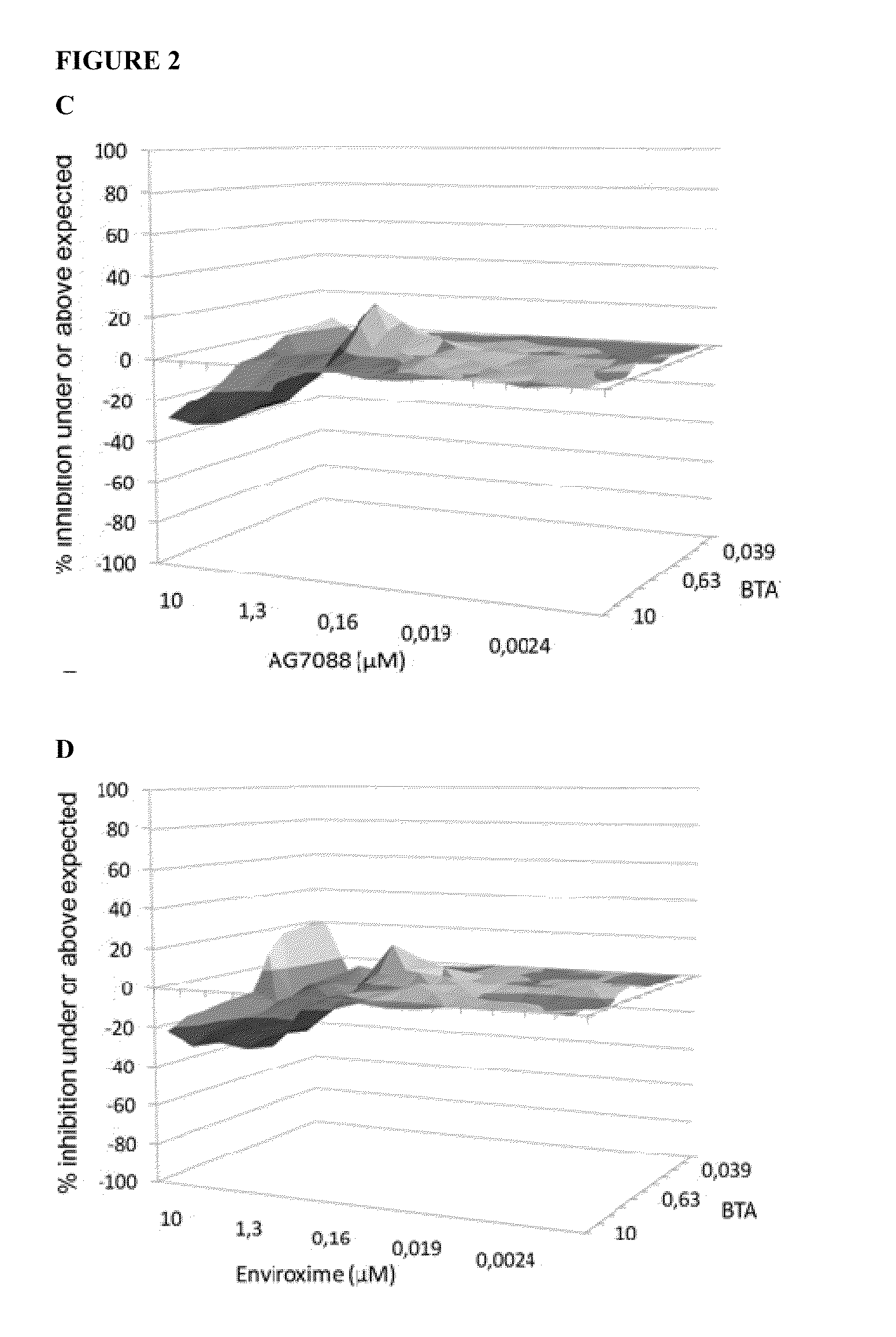Compound for the treatment of enteroviruses
- Summary
- Abstract
- Description
- Claims
- Application Information
AI Technical Summary
Benefits of technology
Problems solved by technology
Method used
Image
Examples
example 1
a) In Vitro Assay to Determine Antiviral Activity Against Coxsackievirus A9, A16, A21, Echovirus 11, Poliovirus 1, Poliovirus 2, Poliovirus 3 and Enterovirus 71
[0081]The antiviral activity of the selected compounds was determined using a colorimetric cytopathic effect (CPE) reduction assay and data are expressed as EC50, being the concentration of compound that inhibits virus-induced CPE formation by 50%. Cells, grown to confluency in 96-well plates were infected with 100 CCID50 (50% cell culture infective dose) and treated with serial dilutions of the compound. The cultures were incubated at 37° C. for 3 days, until complete CPE was observed in the infected and untreated virus control (VC). Following incubation with MTS / PMS the optical density of each well was read at 498 nm in a microplate reader. CPE values were calculated as follows: % CPE=[ODCC−ODVirus+Compound] / [ODCC−ODVC]. In these formulae, ODCC corresponds to the optical density of the uninfected and untreated cell cultures...
example 2
Combination Assay to Determine Combined Activity of Anti-Enteroviral Compounds Against Poliovirus 1 (PV1) and Enterovirus 71 (EV71)
[0083]The effect of drug-drug combinations of 3-ethoxy-6-{2-[1-(6-methyl-pyridazin-3-yl)-piperidin-4-yl]-ethoxy}-benzo[d]isoxazole were evaluated using the method described by Prichard and Shipman, analyzing data for synergism, antagonism, or additive effects (Prichard, M. N., and Shipman, C., Jr., “A three-dimensional model to analyse drug-drug interactions”Antiviral Res. (1990) 14: 181-205). When a combination is additive, data points form a horizontal surface that equals the zero plane. A surface that lies above the zero plane indicates a synergistic effect of the combination, a surface below the zero plane indicates antagonism.
[0084]3-Ethoxy-6-{2-[1-(6-methyl-pyridazin-3-yl)-piperidin-4-yl]-ethoxy}-benzo[d]isoxazole (a capsid binder), Rupintrivir i.e. AG-7088 (a protease inhibitor) and Enviroxime (a 3A-targeting compound) were selected as anti-entero...
PUM
| Property | Measurement | Unit |
|---|---|---|
| Electric potential / voltage | aaaaa | aaaaa |
| Volume | aaaaa | aaaaa |
| Volume | aaaaa | aaaaa |
Abstract
Description
Claims
Application Information
 Login to View More
Login to View More - R&D
- Intellectual Property
- Life Sciences
- Materials
- Tech Scout
- Unparalleled Data Quality
- Higher Quality Content
- 60% Fewer Hallucinations
Browse by: Latest US Patents, China's latest patents, Technical Efficacy Thesaurus, Application Domain, Technology Topic, Popular Technical Reports.
© 2025 PatSnap. All rights reserved.Legal|Privacy policy|Modern Slavery Act Transparency Statement|Sitemap|About US| Contact US: help@patsnap.com



